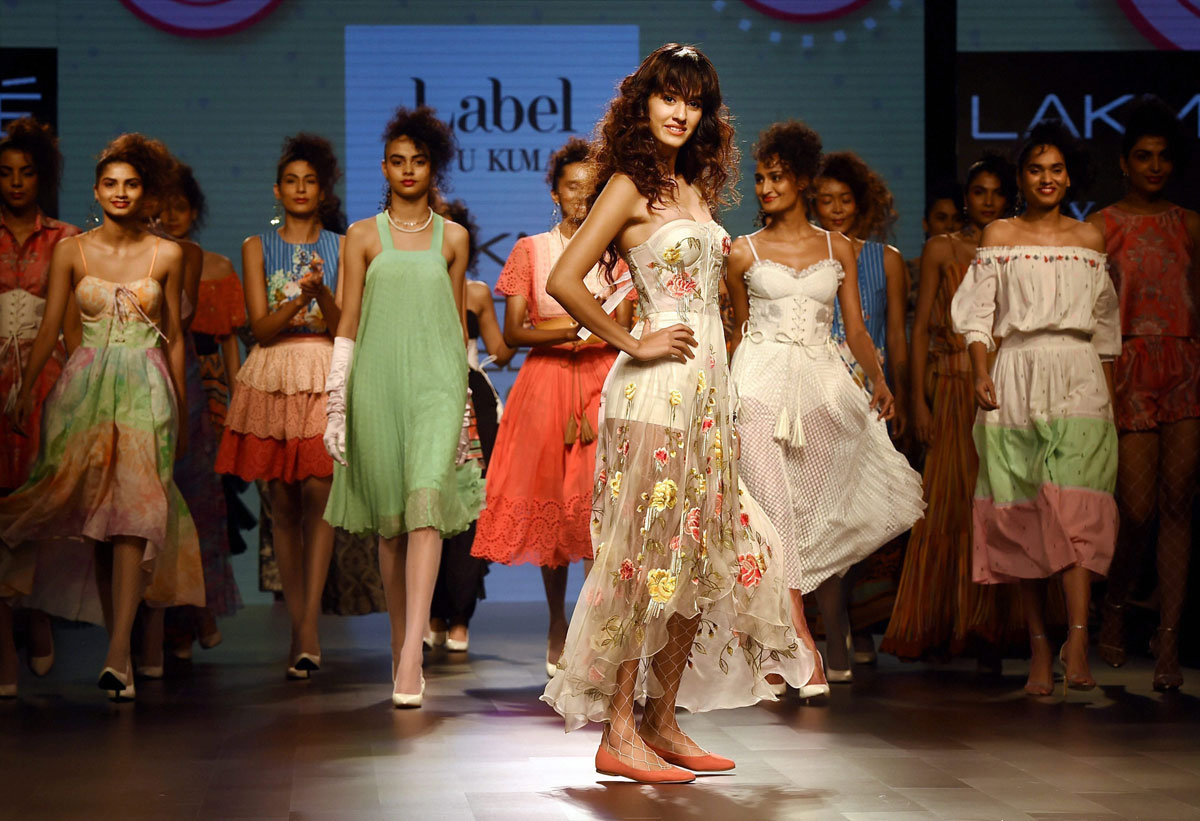Highlights: Lakmé Fashion Week Winter/Festive 2017
Disha Patani walks the ramp during Lakmé Fashion Week displaying Ritu Kumar’s collection in Mumbai, Aug. 16. (Mitesh Bhuvad/PTI)
The designer wear scene is more accepted in India than ever before, say some of the leading designers like Ritu Kumar, Sanjay Garg, and Masaba Gupta, at the Lakmé Fashion Week, Mumbai.
Fashion is Not Only for the Rich: Ritu Kumar
Ritu Kumar has been dressing up Indian brides in some of the most beautiful silhouettes since past five decades and the designer says be it bridal or urban wear, her sole aim has always been to make clothes which can be worn and bought by everyone.
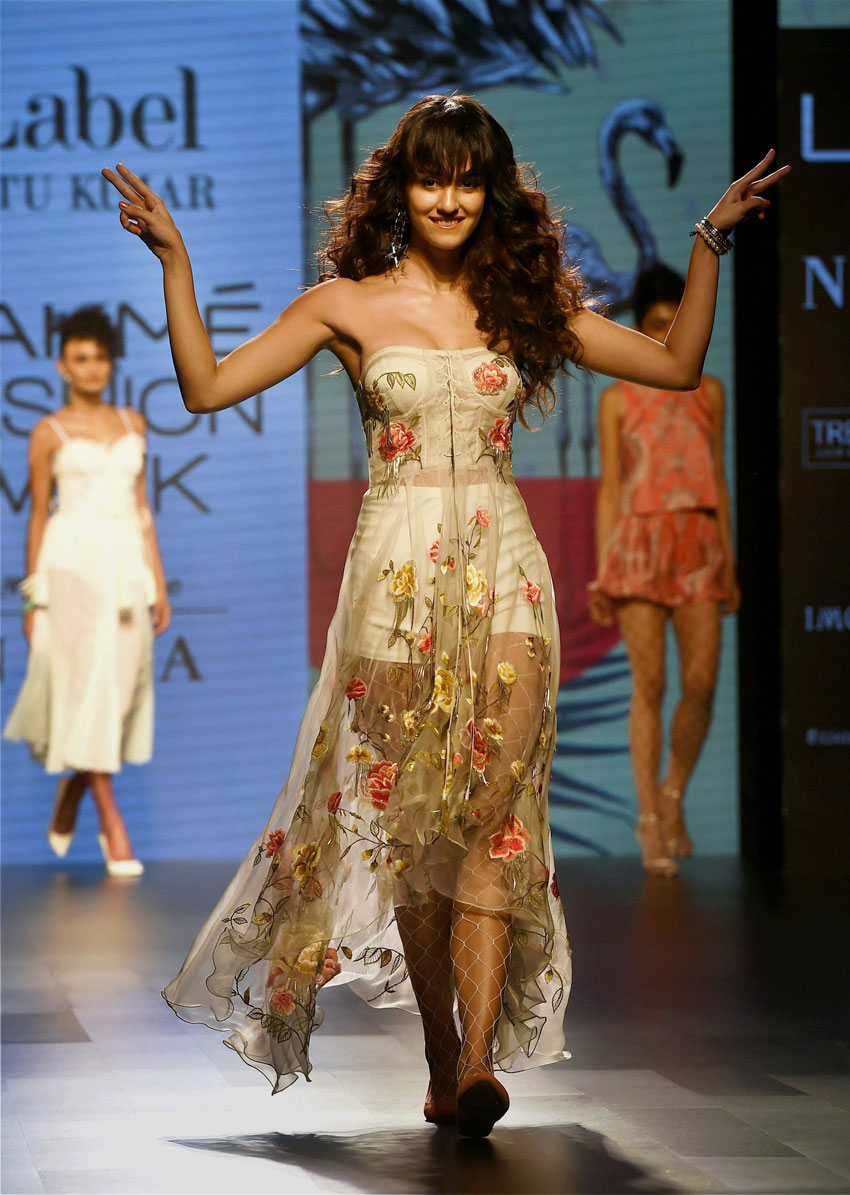
Kumar, who started her label way back in 1969, insists her idea of fashion is just not confined to a particular class.
“I always felt the collection should be represented by how many people wear it. It should go across many more places, even small cities.
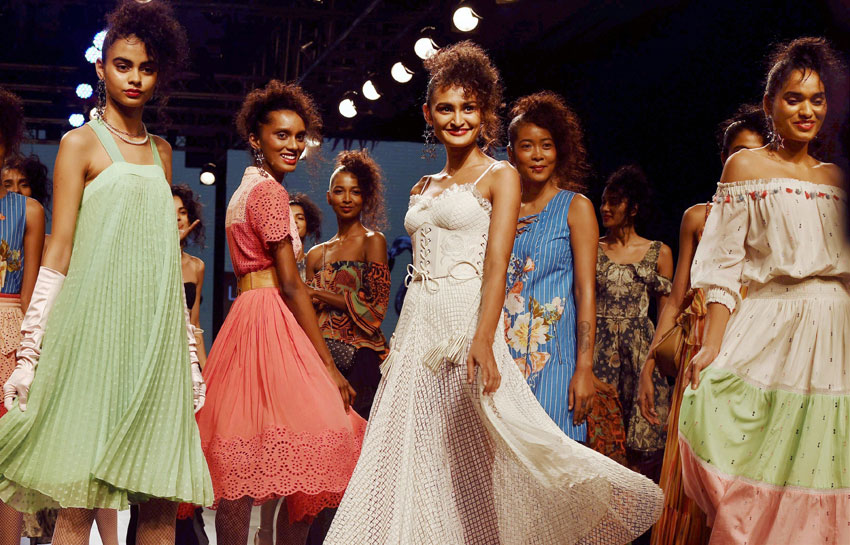
“The price range should be such that anyone can buy it and just not live with a dream to wear it someday. The idea of fashion for me is to make everyone look beautiful. I don’t think fashion is only for the rich,” Kumar told PTI on the sidelines of Lakmé Fashion Week Winter/Festive 2017.
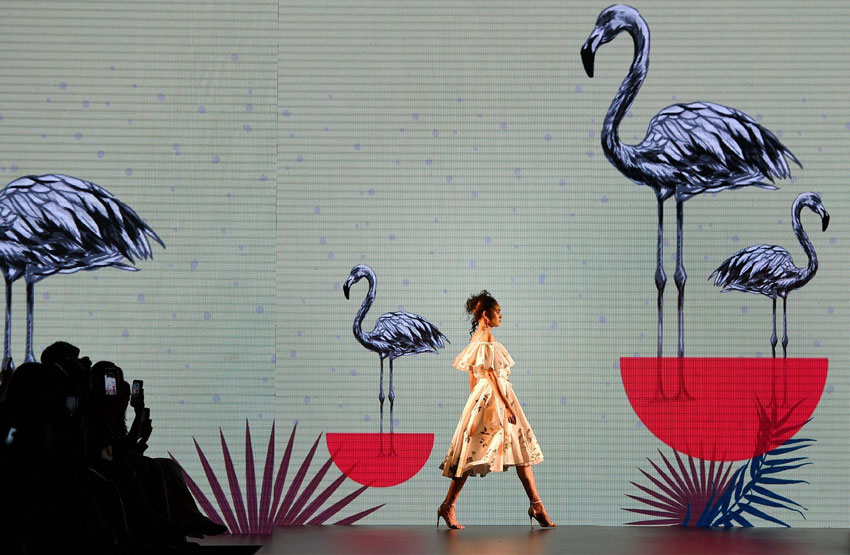
The designer launched a different range of affordable contemporary clothing under her ‘Label’ in 2002 along with son Amrish, and hopes other big labels will also move in the same direction soon.
“There are still very few designers, who have separate affordable range. I really want fashion houses and labels to come up with clothes for everyone. The thought of feeling beautiful should not be governed by the (price) tag.”
Kumar says India is one of the fastest growing fashion industries and serving the masses could contribute to that growth.
“India is a growing industry. What I see here is an organic growth. People are now not only aware about the international labels and enjoy wearing Indian brands as well.
It is a very encouraging trend for designers and they should utilize it completely.”
The fashion veteran, however, is happy that the young brigade of designers is focusing on getting buyers from various strata.
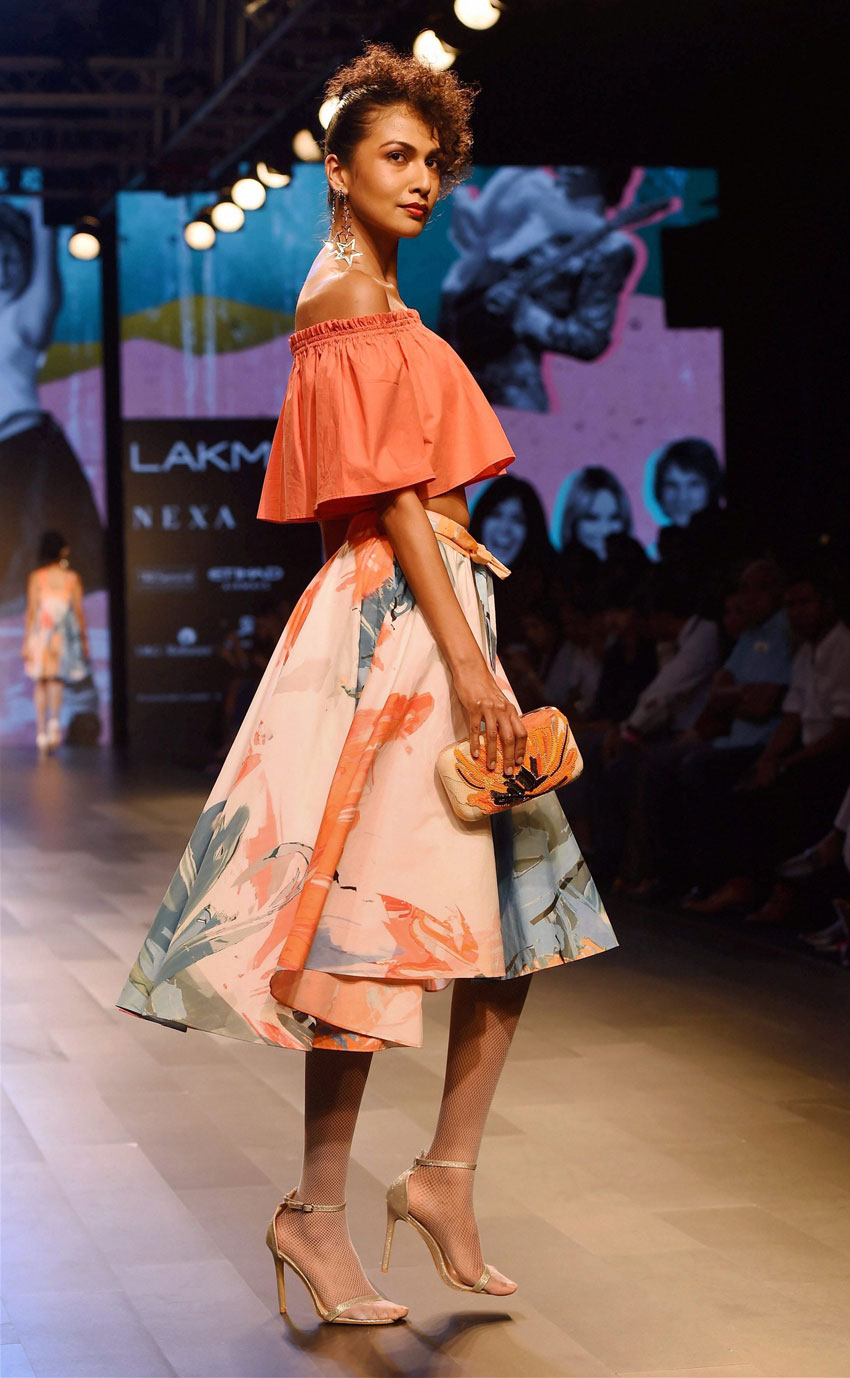
“The fact that young designers are coming and new labels are being launched is a positive step. Younger lot is more than willing to design from a normal day-to day wear to bridal range. They are even experimenting with handlooms and Indian textiles. It makes me really happy.
“I am also happy that they are making India an international brand. It is a great trend. It is good that we are not following any particular trend of West.”
The label Ritu Kumar showcased its new collection, “Sweet Surrender,” at the fashion week.
Kumar says her brand is targeting the young consumers, who want to experiment and make a bold statement.
“Young people today are changing. Their lifestyles are changing and it is becoming quite international. Comfort has become a big thing, but at the same time they also want an edgy look, which they can wear throughout the day.”
The collection was designed keeping modern sensibilities in mind, but the fabrics and the intricate detailing still had its roots in Indian karigari.
Kumar says, “We as designers should focus on the Indian textiles and works. The collection was western but there was a reflection of Rajasthan.” – Shubha Dubey
Sanjay Garg Puts Stunning Show for Lakmé at Royal Opera House
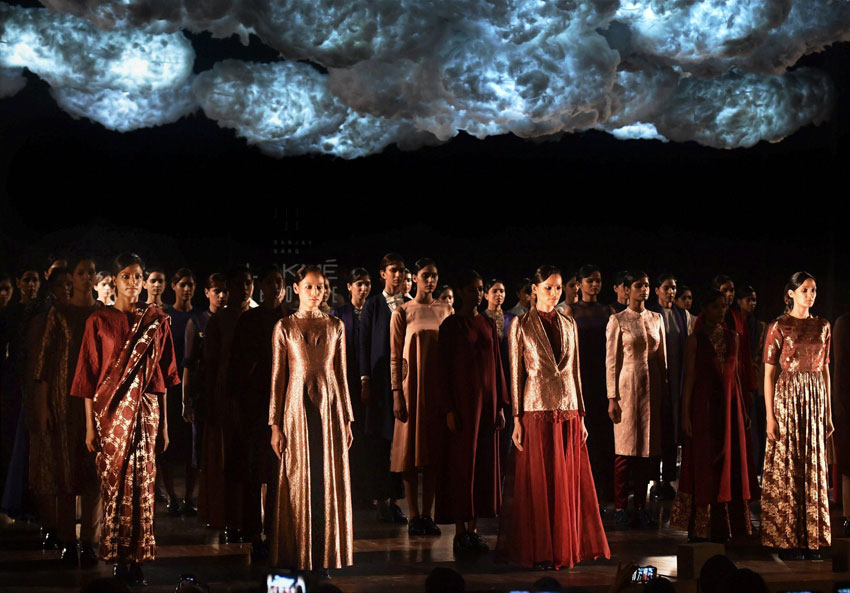
With a vintage setting at the famous Royal Opera House, Sanjay Garg brought the old-world charm on the ramp as he closed the first day of the ongoing Lakmé Fashion Week Winter/Festive 2017 in Mumbai.
Titled “Cloud People,” the collection celebrated the purity of craftsmanship and textile.
The contemporary yet Indian silhouettes presented the handcrafted chikankari on Bengal mul, zardozi and hand-woven brocade beautifully.
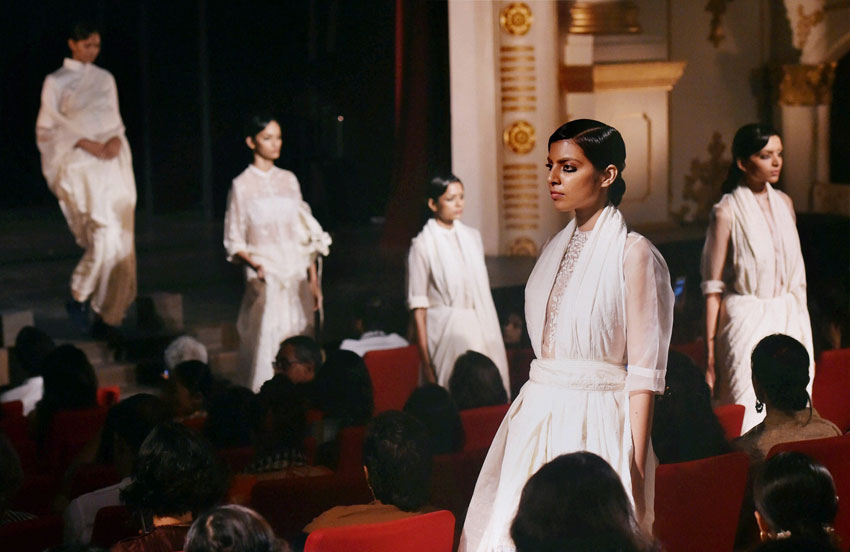
Talking about his latest obsession with chikankari, Garg told PTI, “Raw Mango has always worked with handloom and we want to show handloom in different ways. Chikanari is the main embroidery this time and I feel it beautifully compliments the clothes.”
The designer said it took him months to bring alive his interpretation of chikankari.
“It is a long process. It took me a lot of time to bring chikankari from chiffon and georgette to cotton. We have also ditched the classic paisley motif and have gone figurative with chikankari. We have used different interpretations.”
The collection was inspired by Lakmé’s beauty range enriched with Argan oil. On his collaboration with the beauty brand, Garg said, “Working with Lakmé Fashion Week is always a pleasure. It truly feels like a full circle as LFW was where I had my first show. This season has been very special also because this is my first collection featuring chikankari.”
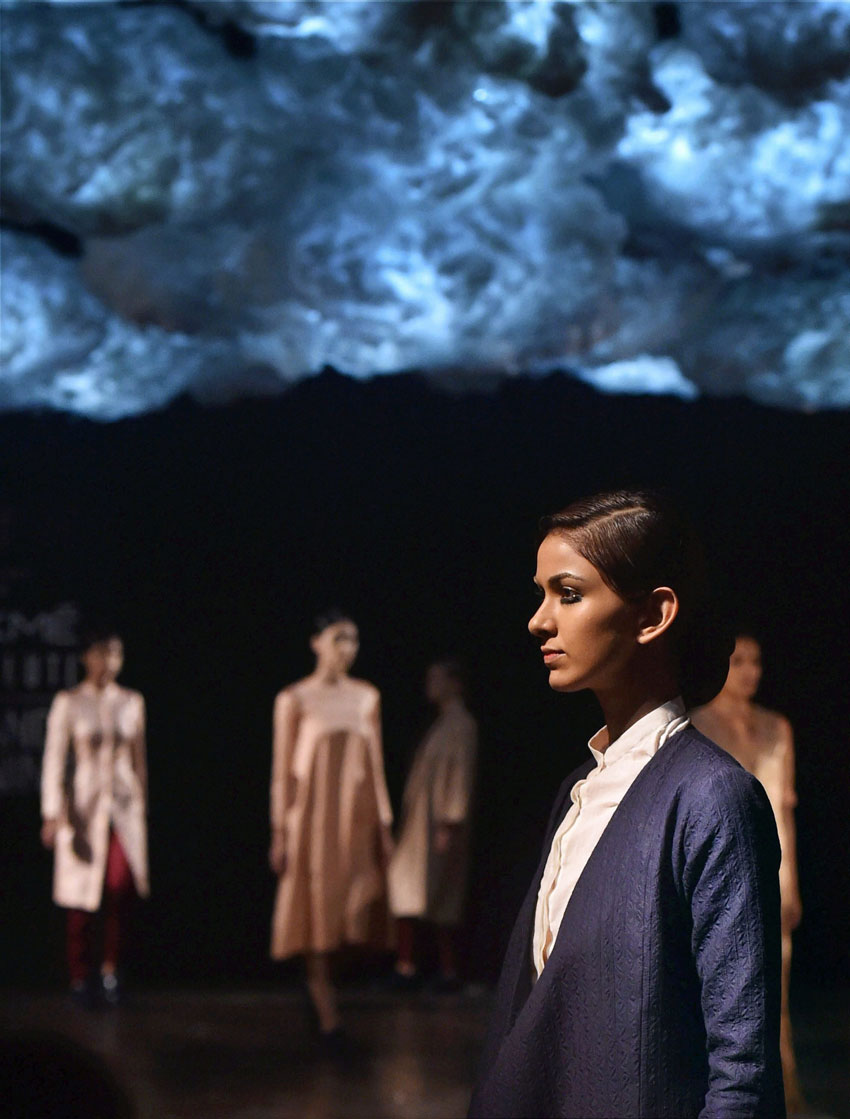
Apart from the clothes, the biggest highlight of the night was the beautiful venue and live opera performance that enthralled the audience.
With the unique choice of the venue, the beauty brand went back to its inception of being inspired by a French Opera named Lakmé.
Simone Tata, who played a pivotal role in steering the brand in its early years, attended the show.
Garg’s celebrity fans Mini Mathur, Tillotama Shome and Amrita Puri were also present.
Designer Wear More Acceptable Now: Masaba
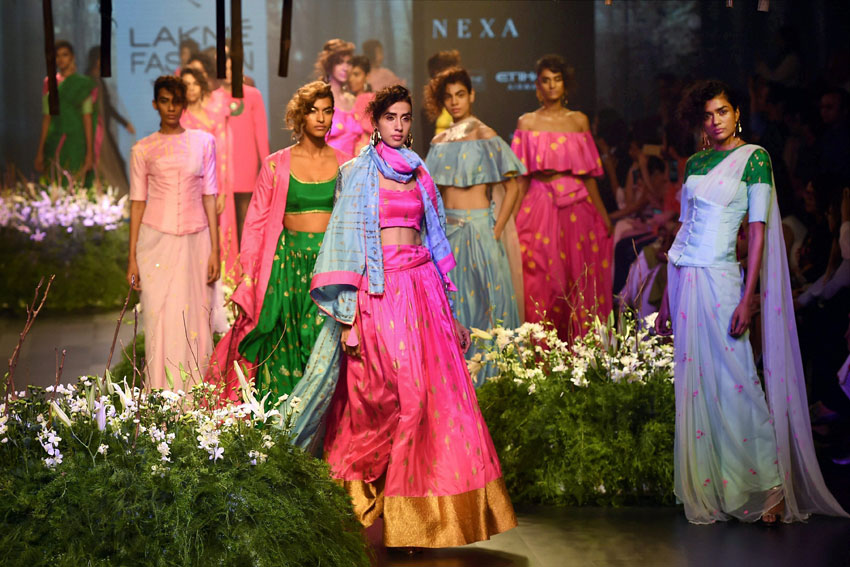
Masaba Gupta’s quirky and unique prints have made her a favorite among celebrities as well as the masses.
The designer said the reason behind the popularity of her young label is that people have now become much more aware of the trends and are willing to spend on their style.
Masaba, who showcased her new collection at the Lakmé Fashion Week Winter/Festive 2017 today, said the digital media has also contributed a lot in this boom in the fashion industry.
In an interview with PTI, Masaba said, “The fashion scene in India has changed immensely. People have now become more accepting towards designer wear on a day-to-day basis. The spending power has also increased. People have become far more fashionably aware of trends that are popular across the globe.
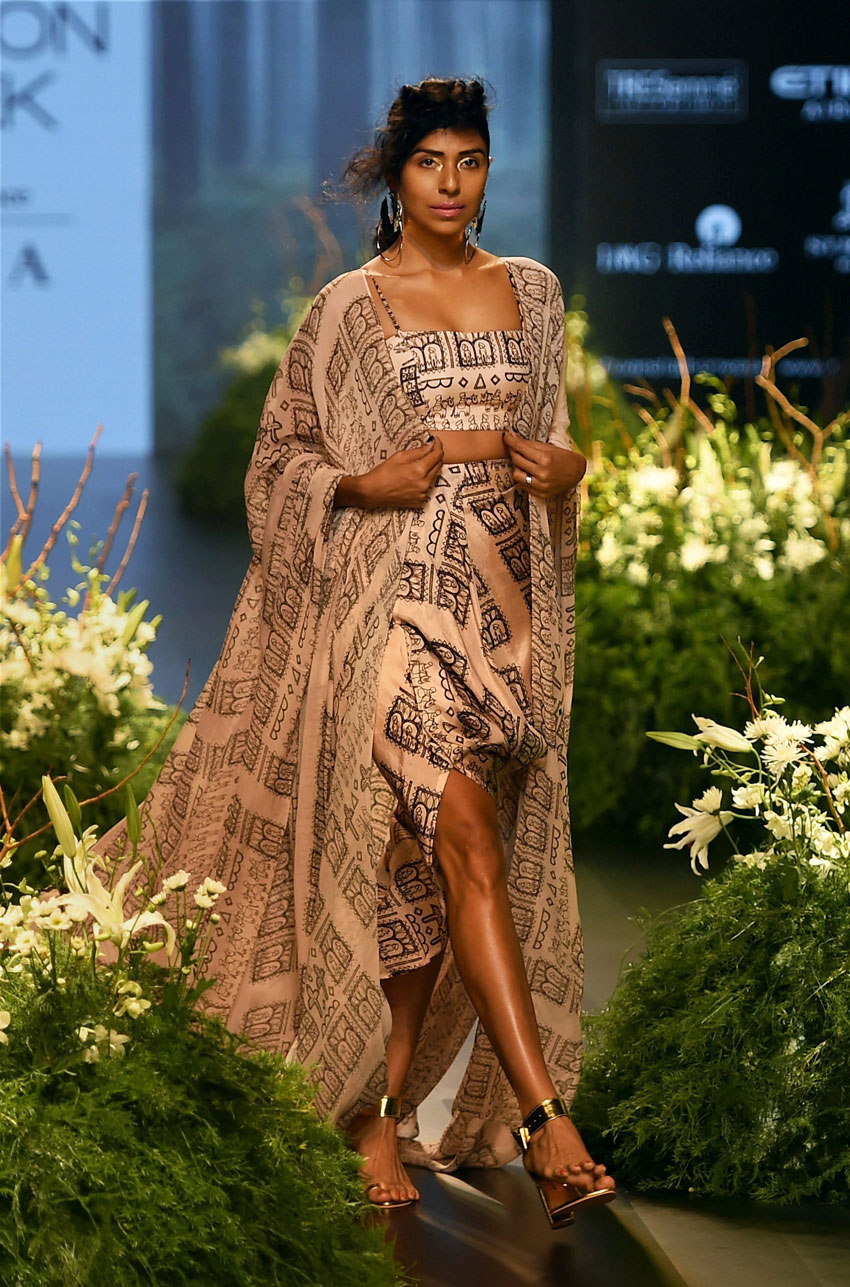
“People are open to experimenting now. They want to look a certain way and dress a certain way. They want to put effort, time and money in their looks.”
The Mumbai-based designer presented the collection in collaboration with Himalayan Orchard Pure and her clothes aimed at a girl’s trousseau for a destination wedding in the tropics.
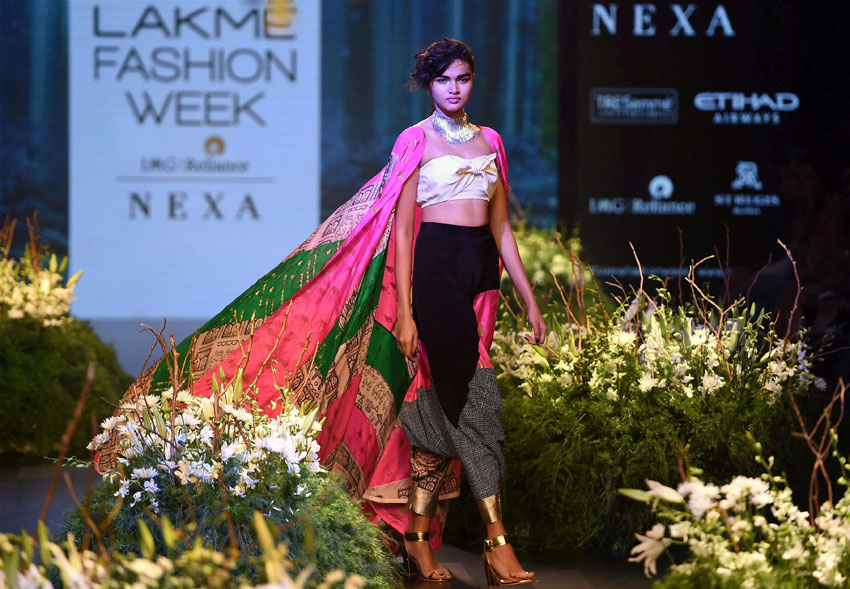
The collection was also influenced by subtle Sakalava tribe face paintings, alongside the bountiful orchard gardens serving as the canvas.
“The collection is fresh and about anything that is organic and pure. We have also taken some influences from Madagascar. That is one place I have always been fascinated with. It is home to these rare flora and fauna. The colors and prints are from there,” Masaba added.
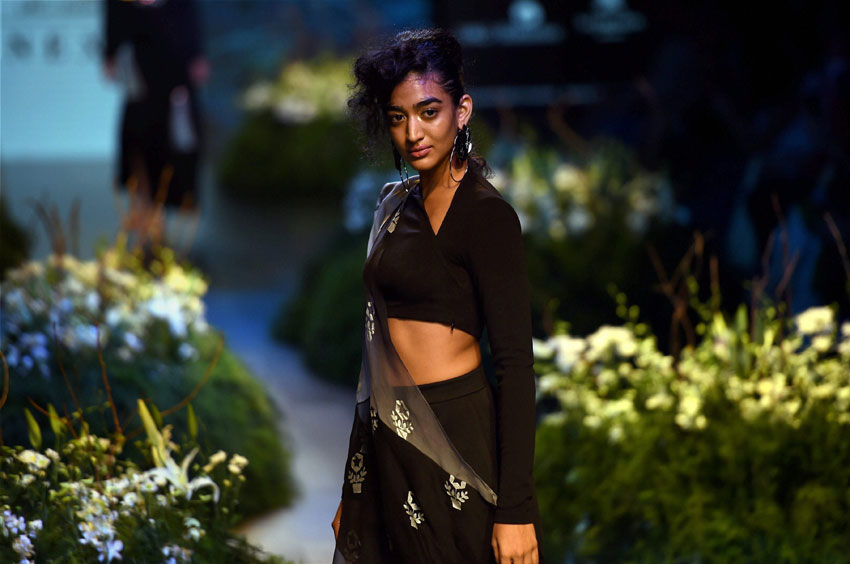
Linear grass prints, abstract foliage and floral buds in fluid strokes dominated the range.
Talking about her experiment with prints, Masaba said, “The way we use prints have become signature than the prints itself. The way we pair our prints is new always. We pick up different influences on prints.”
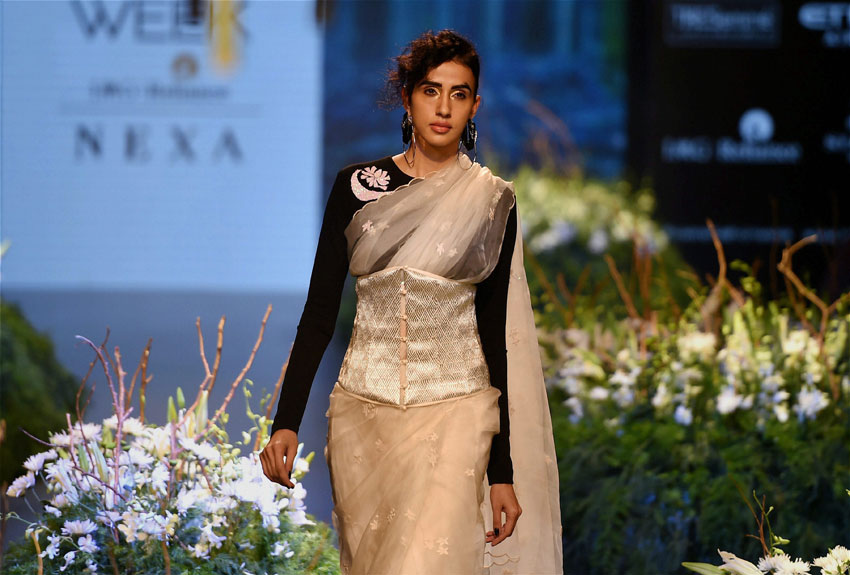
The line was centered around progressive Indian wear, featuring outfits with a contemporary and fresh take on tradition, such as flowy anarkalis with caped backs, corsets, clouded silk dresses with knots flowing through the seams and feminine bow tops paired with drop crotch dhotis.
Intricate embroidered embellishments with tinges of gold and silver adorned the plush silks.
